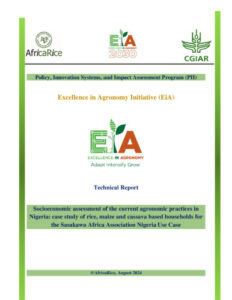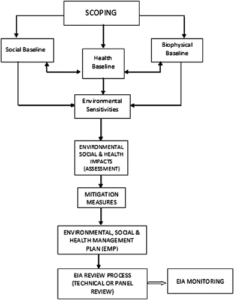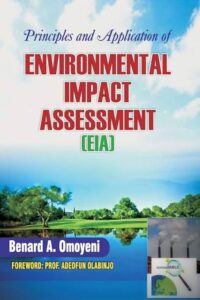Back to: Environmental Biology 500 Level
Welcome to class!
Hello there, brilliant learner! It’s always a joy to have you here, growing stronger in your knowledge and understanding of how we can build a better Nigeria and a greener Africa. You’ve learned what Environmental Impact Assessment (EIA) is, how it works, and why it matters. Now, it’s time to look at real-life examples of how EIA has been applied in Nigeria. Our topic for today is Case Studies in Nigerian EIA Practice—and it’s all about learning from actual projects, both the successes and the challenges, so we can understand how EIA works beyond theory.
Case Studies In Nigerian EIA Practice
What is a Case Study in EIA?
A case study is a real example of how EIA was used in a project—showing what was planned, what was discovered, how the impacts were managed, and what we can learn from the experience. It helps us connect theory to reality, and gives us a better sense of what works and what doesn’t in the Nigerian context.

Let’s look at some notable case studies.
1. The Lekki Deep Sea Port Project (Lagos State)
Overview:
This is one of Nigeria’s biggest port projects, designed to improve trade and ease the pressure on existing ports.
EIA Practice:
The EIA considered impacts on marine life, surrounding communities, mangrove vegetation, and air quality.
Community engagement was key—local fishermen were involved in discussions.
Mitigation included replanting mangroves, compensating displaced people, and monitoring water quality.
Lesson:
Strong stakeholder engagement and environmental planning can allow development and environmental protection to go hand in hand.
2. Zungeru Hydroelectric Power Project (Niger State)
Overview:
This is a major dam project aimed at generating electricity and reducing Nigeria’s power deficit.
EIA Practice:
The EIA highlighted the risk of flooding, displacement of communities, and loss of farmland.
Resettlement and compensation plans were included in the Environmental and Social Management Plan (ESMP).
Environmental monitoring of the river’s water quality continues to be part of the project.
Lesson:
Large-scale projects must prioritise both environmental and social impact assessments. Poor handling of resettlement could lead to long-term conflict or poverty.

3. Dangote Refinery Project (Lagos Free Trade Zone)
Overview:
Africa’s largest oil refinery, located in Ibeju-Lekki, was assessed through an extensive EIA process.
EIA Practice:
Key concerns were air pollution, marine pollution, and effects on nearby communities.
The project included high-standard pollution control systems.
Noise, traffic, and worker safety were also considered.

Lesson:
Industrial projects can reduce environmental risks when EIAs are followed properly and continuously monitored.
Summary
- Case studies help us understand how EIA works in real-life projects.
- Examples include the Lekki Deep Sea Port, Zungeru Hydroelectric Project, and Dangote Refinery.
- Successful EIA practice involves proper consultation, solid mitigation plans, and continuous monitoring.
- The Nigerian EIA process can be strong when laws are followed, and communities are respected.
Evaluation
- What is the purpose of studying case studies in EIA practice?
- Mention two key environmental concerns addressed in the Lekki Deep Sea Port EIA.
- What lesson can be learned from the Zungeru Hydroelectric Project EIA?
- Why is community participation important in EIA practice?
Amazing job today! You’ve just explored how EIA plays out in real Nigerian projects—and that’s powerful knowledge. With this kind of understanding, you’re well on your way to becoming an expert who leads sustainable development in Nigeria and beyond. Keep going strong. Afrilearn is cheering you on, every step of the way. See you in the next class, environmental change-maker!
